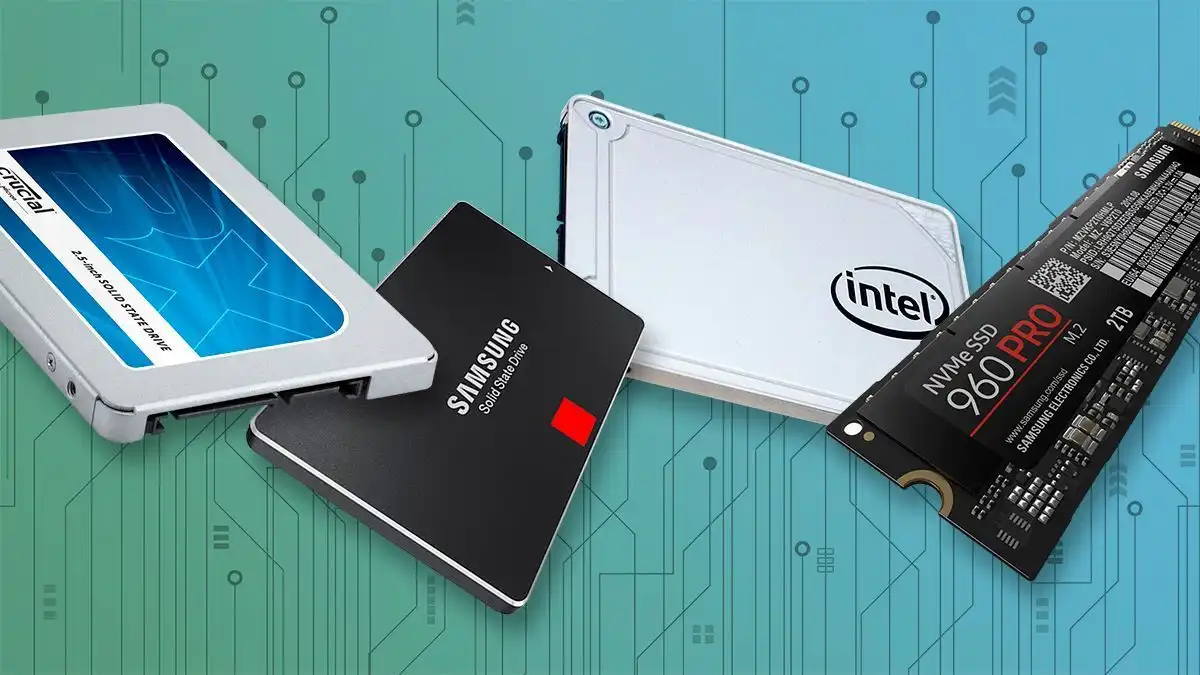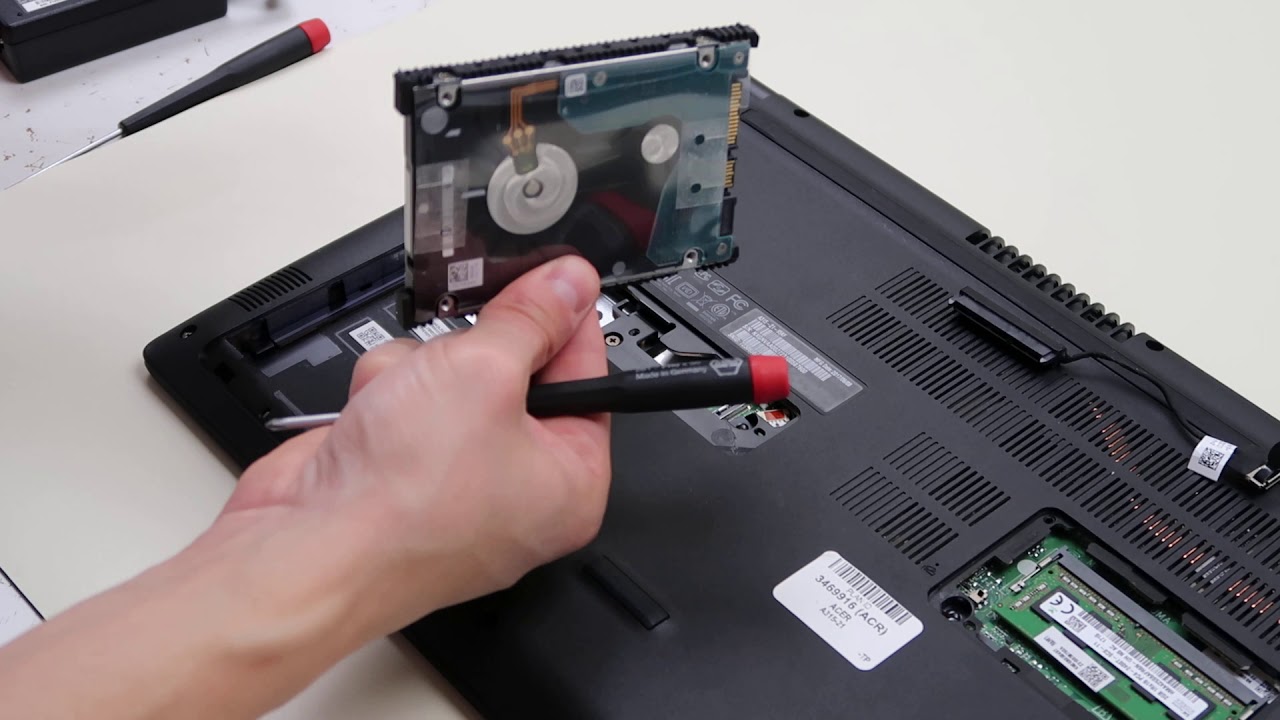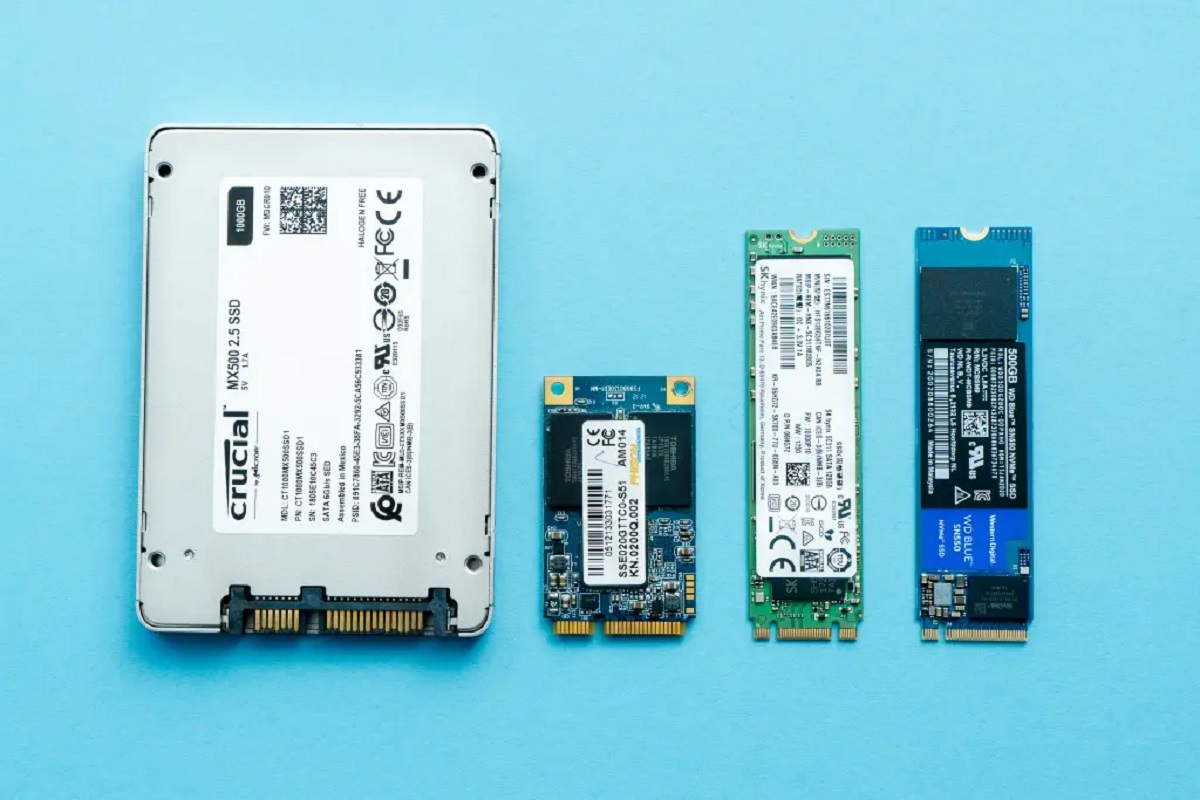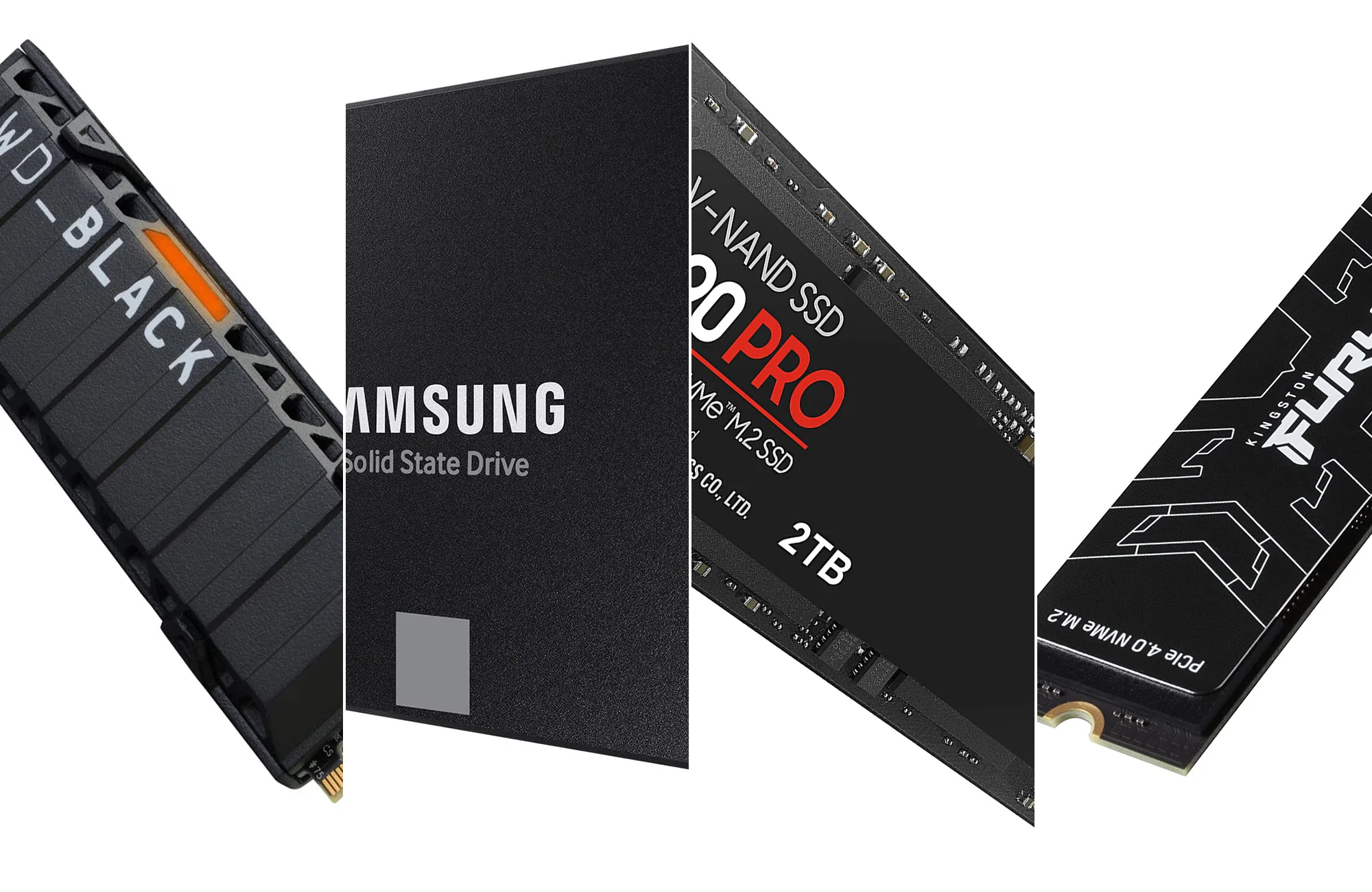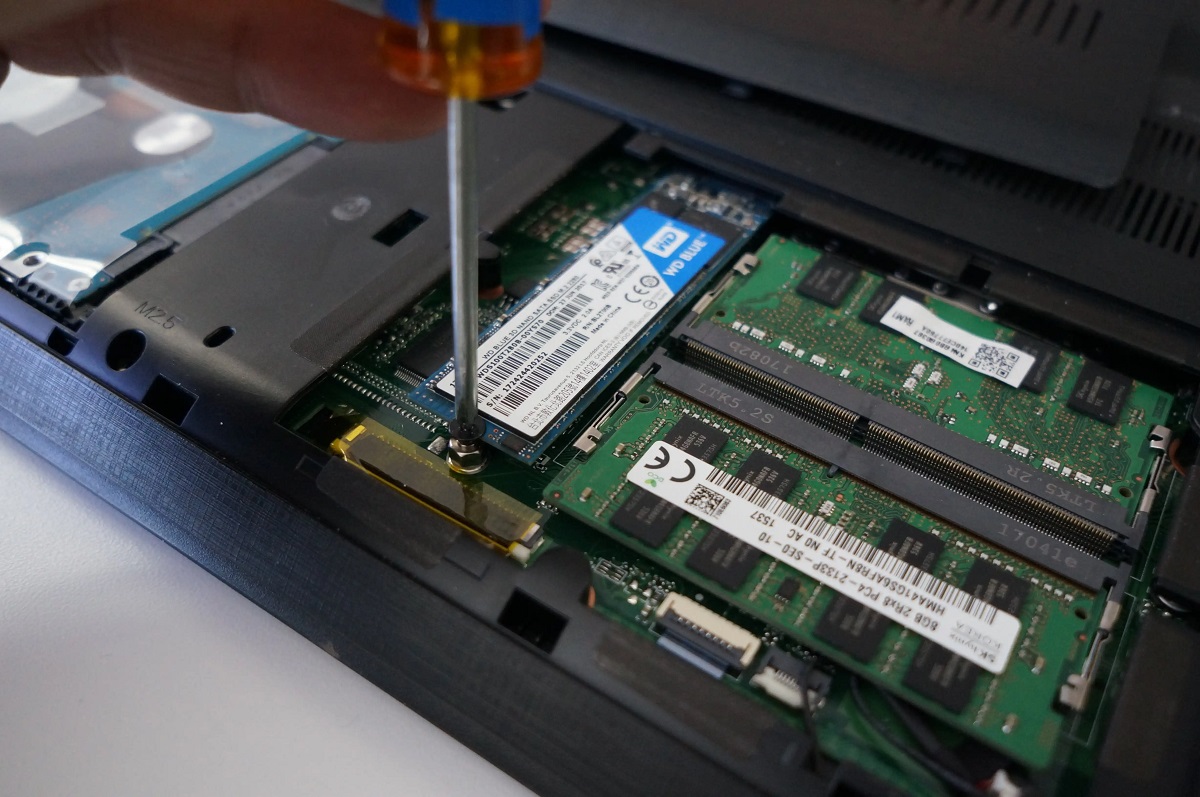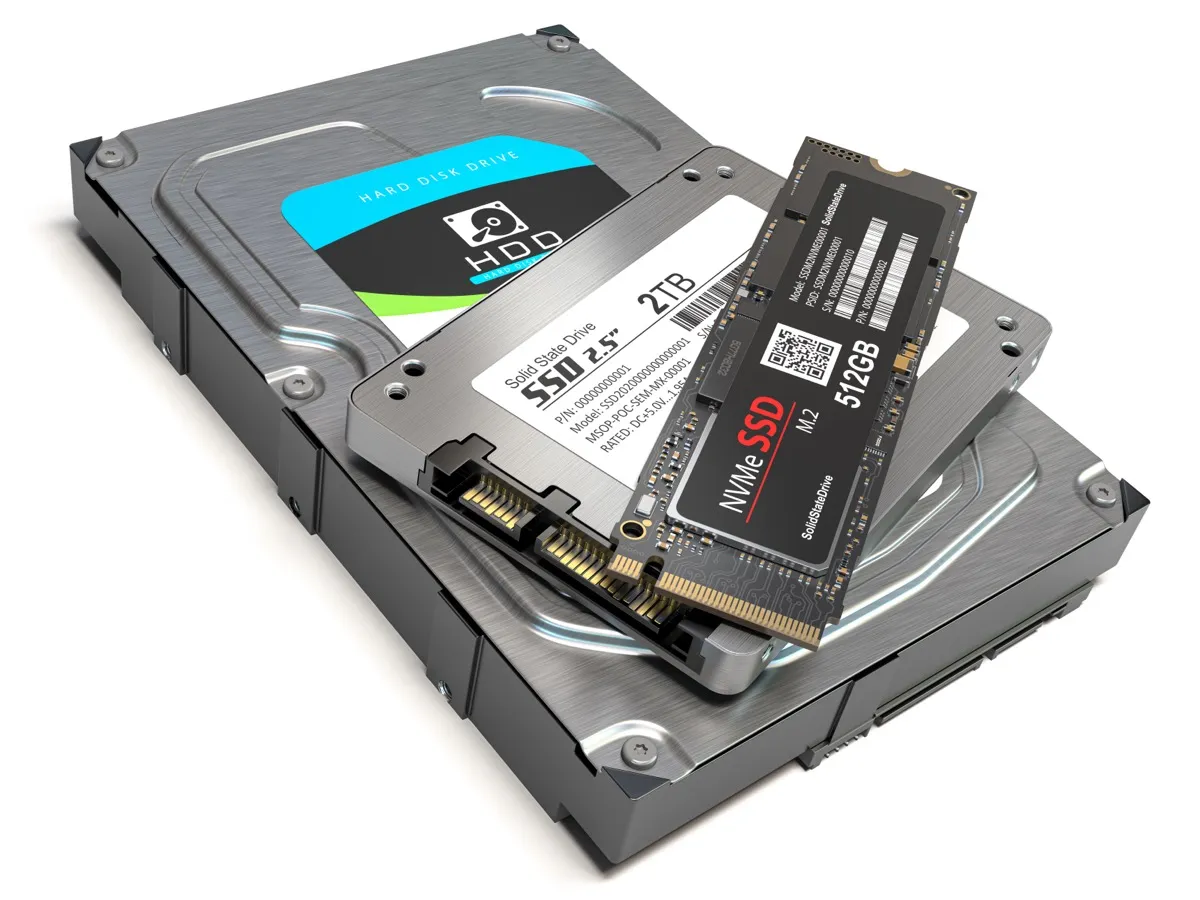Introduction
Welcome to this comprehensive guide on the cost of manufacturing solid-state drives (SSDs). As technology continues to advance at a rapid pace, the demand for faster and more efficient storage solutions has skyrocketed. SSDs have gained significant popularity due to their numerous advantages over traditional hard disk drives (HDDs), such as faster read and write speeds, lower power consumption, and increased durability.
In this article, we will delve into the various factors that contribute to the overall cost of producing SSDs. From the components used in their construction to the labor and manufacturing processes involved, we will uncover the intricacies behind the pricing structure of these cutting-edge storage devices.
Understanding the cost of producing SSDs is crucial not only for manufacturers but also for consumers who are interested in purchasing these high-performance drives. By gaining insight into the different elements that determine SSD prices, consumers can make informed decisions that balance their budget with their storage needs.
Before we dive into the details, let’s take a closer look at what exactly solid-state drives are and why they have become the preferred choice for storing data in the digital age. This knowledge will lay the foundation for understanding the factors that influence their manufacturing costs.
Overview of Solid State Drives
Solid-state drives (SSDs) are storage devices that use flash memory technology to store and retrieve data electronically. Unlike traditional hard disk drives (HDDs), which rely on spinning disks and moving read/write heads, SSDs have no moving parts, making them faster, more durable, and less prone to mechanical failure.
One of the main advantages of SSDs is their speed. Traditional HDDs can be limited by the physical movement of the disk and the read/write heads, whereas SSDs can access data almost instantly. This significantly improves overall system performance, as applications and files can be retrieved and loaded much faster.
SSDs also excel in terms of energy efficiency. Since SSDs do not have any moving parts that require power, they consume significantly less energy compared to HDDs. This not only helps to extend battery life in portable devices, but also reduces overall energy consumption, making SSDs more environmentally friendly.
Durability is another key factor that sets SSDs apart from HDDs. With no moving parts, SSDs are less susceptible to physical damage caused by drops or vibrations. Furthermore, SSDs utilize wear-leveling algorithms, which distribute data evenly across the memory cells to ensure that all cells are used equally. This prolongs the lifespan of the drive and makes it more reliable in the long run.
In terms of form factor, SSDs are available in various sizes and designs to suit different devices and applications. The most common form factors for consumer SSDs are 2.5-inch drives, which are the same size as traditional laptop HDDs, and M.2 drives, which are smaller and more suitable for ultrabooks and small form factor devices.
Overall, solid-state drives offer a range of benefits over traditional hard disk drives, including faster performance, lower power consumption, increased durability, and smaller form factors. As a result, SSDs have become the preferred choice for many consumers and businesses looking to upgrade their storage solutions.
Components of a Solid State Drive
A solid-state drive (SSD) is a complex piece of technology that consists of several key components working together to store and retrieve data. Understanding these components is essential to comprehend the manufacturing process and the costs associated with producing SSDs.
1. Flash Memory: The primary component of an SSD is the flash memory. It is a non-volatile storage medium that retains data even when the power is removed. SSDs utilize NAND flash memory, which is known for its high-speed performance and durability.
2. Controller: The controller is the “brain” of the SSD, responsible for managing data transfer, wear leveling, error correction, and other important tasks. It plays a crucial role in determining the performance and reliability of the SSD.
3. DRAM Cache: Many SSDs incorporate a small portion of dynamic random-access memory (DRAM) as a cache for frequently accessed data. The DRAM cache helps to improve read and write performance and ensures smooth and efficient data operations.
4. Interface: The interface determines how the SSD connects to the host computer. The most common interfaces for consumer SSDs are SATA (Serial ATA) and PCIe (Peripheral Component Interconnect Express). PCIe offers faster data transfer rates compared to SATA, making it suitable for high-performance SSDs.
5. Power Capacitors: To prevent data loss in the event of power failure, some SSDs are equipped with power capacitors. These capacitors provide enough power to flush the data in the volatile DRAM cache to the flash memory before the drive loses power.
6. PCB (Printed Circuit Board): The PCB is the physical platform that houses and connects all the components of the SSD. It provides electrical connectivity and ensures the smooth operation of the drive.
7. Enclosure: The enclosure of an SSD is responsible for protecting the internal components from physical damage and providing a connection interface (e.g., SATA or M.2) to the host system.
These are the major components that make up a solid-state drive. Each component plays a crucial role in the overall performance, reliability, and cost of the SSD. Manufacturers carefully select and design these components to meet specific performance and budget requirements, resulting in a wide range of SSD options available in the market.
Manufacturing Process of a Solid State Drive
The manufacturing process of a solid-state drive (SSD) involves several stages that transform the various components into a fully functional storage device. This process requires precision engineering, advanced technologies, and strict quality control measures to ensure the final product meets the highest standards of performance and reliability.
1. Component Assembly: The first step in the manufacturing process is the assembly of the individual components. This involves mounting the flash memory chips, controller, DRAM cache, and other components onto the printed circuit board (PCB) of the SSD. Advanced robotic assembly machines are used to ensure precise component placement and soldering.
2. Firmware Installation: Once the components are assembled onto the PCB, the firmware is installed. The firmware is the software that controls the operation of the SSD, including data management, error correction, and performance optimization. It is carefully programmed to ensure the SSD operates efficiently and reliably.
3. Testing and Quality Control: After the firmware installation, the SSD undergoes rigorous testing and quality control procedures. This includes functional testing to ensure all components are working properly, performance testing to measure read and write speeds, and reliability testing to assess durability and endurance. Any defective units are identified and removed from the production line.
4. Enclosure and Labeling: Once the SSD passes all the quality control tests, it is enclosed in a protective casing. The enclosure provides physical protection to the internal components and typically includes labeling with product information such as model number, capacity, and interface type. The final product is now ready for packaging.
5. Packaging and Distribution: The packaged SSDs are then prepared for distribution. They are placed in boxes or blister packs with instructions, warranty information, and other marketing materials. The packaged SSDs are then shipped to distribution centers or directly to retailers for sale to consumers or businesses.
The manufacturing process of a solid-state drive is a complex and intricate series of steps that require specialized equipment, skilled labor, and meticulous quality control measures. Each stage of the process contributes to the overall cost of producing SSDs and ensuring they meet the high standards expected by consumers.
Cost of Raw Materials
When it comes to the cost of manufacturing solid-state drives (SSDs), the raw materials used in their production play a significant role. Several key components comprise the raw materials of an SSD, each contributing to the overall cost of the final product.
1. Flash Memory: Flash memory is the most crucial raw material in an SSD. The cost of flash memory chips depends on factors such as capacity, speed, and technology. As technology advances and higher-capacity chips become available, the cost per gigabyte of flash memory tends to decrease. However, newer and faster flash memory technologies may have a higher cost due to their improved performance and reliability.
2. Controller: The controller chip is another vital component of an SSD, responsible for managing data transfer and other essential operations. The cost of the controller chip varies based on its features, performance, and capabilities. Advanced controllers with higher speeds and more advanced error-correction algorithms may come at a higher cost.
3. DRAM Cache: The cost of the dynamic random-access memory (DRAM) used as a cache in an SSD is a consideration. The price of DRAM is subject to supply and demand dynamics within the memory market. In addition to the cost of the DRAM chips, there are also assembly and integration costs associated with incorporating the cache into the SSD design.
4. PCB and Enclosure: The printed circuit board (PCB) and enclosure materials are necessary for the physical construction of the SSD. The cost of these materials depends on factors such as quality, size, and complexity. Higher-quality materials may incur additional costs but contribute to improved durability and reliability.
5. Other Components: Various additional components, such as capacitors, connectors, and integrated circuits, are required for the proper functioning of the SSD. The cost of these smaller components adds up and contributes to the overall cost of manufacturing.
It is important to consider that the cost of raw materials is subject to market fluctuations and changes in supply and demand. The overall pricing of these components can vary over time, affecting the final cost of manufacturing SSDs.
In addition to the cost of raw materials, other factors such as research and development expenses, labor costs, production costs, marketing, and distribution expenses also contribute to the overall cost of manufacturing SSDs. Understanding these various cost components is crucial for manufacturers to determine pricing strategies and for consumers to make informed decisions when purchasing SSDs.
Labor Costs
Labor costs play a significant role in determining the overall cost of manufacturing solid-state drives (SSDs). Skilled labor is required at various stages of the production process to ensure the quality, precision, and efficiency of SSD manufacturing.
1. Research and Development: The initial stages of SSD development involve research and development (R&D) efforts to design and optimize the product. This includes engineering teams working on the design of the SSD, firmware development, and performance testing. The wages and salaries of these skilled professionals contribute to the overall labor costs.
2. Component Assembly: The assembly of components onto the printed circuit board (PCB) requires skilled workers who can handle delicate electronic parts and perform intricate soldering. The labor costs involved in this assembly process depend on factors such as the complexity of the design and the level of automation employed in the assembly line.
3. Quality Control: Ensuring the quality and reliability of SSDs is crucial, and this requires skilled workers to conduct rigorous quality control tests. These workers are responsible for testing the SSDs for functionality, performance, and durability, ensuring that only fully functional units pass the quality control checks. Their wages contribute to the labor costs associated with SSD manufacturing.
4. Operating and Maintenance: The ongoing operation and maintenance of the manufacturing facilities are essential to ensure smooth production. Skilled workers are required to monitor and maintain the equipment and machinery used in the production process, minimizing downtime and optimizing productivity. The wages of these workers factor into the labor costs of SSD manufacturing.
5. Engineering and Technical Support: After the manufacturing process, engineering and technical support teams are needed to provide assistance to customers and address any product-related issues and inquiries. These teams ensure customer satisfaction and provide ongoing support for the SSDs. Their wages contribute to the labor costs associated with providing customer service and technical support.
It is important to note that labor costs can vary depending on factors such as geographical location, the level of automation in the manufacturing process, and the size of the production facilities. Skilled labor is an essential component of SSD manufacturing, as their expertise and attention to detail are crucial to producing high-quality and reliable SSDs.
Considering the labor costs along with the costs of raw materials, research and development, production, marketing, and distribution, manufacturers establish the pricing strategies for SSDs. Understanding the labor costs involved in SSD manufacturing helps both manufacturers and consumers to appreciate the value of these advanced storage devices.
Research and Development Expenses
Research and development (R&D) expenses are a critical component of the overall cost of manufacturing solid-state drives (SSDs). These expenses encompass the investments made in designing, developing, and optimizing the technology and features of SSDs to meet the ever-evolving demands of the market and the needs of consumers.
1. Design and Innovation: R&D expenses are incurred during the design phase of SSD development. This involves identifying and understanding the requirements and challenges of the target market, defining product features and specifications, and exploring innovative solutions to enhance performance, reliability, and durability. Skilled engineers and designers work on creating SSD architectures that maximize efficiency and meet the growing demands for storage speed and capacity.
2. Firmware Development: The firmware is a vital component of SSDs, responsible for controlling various operations such as data transfer, error correction, wear leveling, and power management. R&D expenses are incurred in developing and optimizing the firmware to improve performance, enhance compatibility with different systems, and ensure data integrity. R&D teams continuously work on refining and updating the firmware to address emerging technologies and address potential vulnerabilities.
3. Performance Optimization: R&D efforts are directed towards optimizing the performance of SSDs. This includes maximizing read and write speeds, minimizing latency, and improving overall responsiveness. R&D teams conduct extensive testing and analysis to identify bottlenecks and develop sophisticated algorithms and controllers to enhance performance. These efforts contribute to delivering high-speed and efficient SSDs to consumers.
4. Reliability and Endurance Testing: To ensure that SSDs meet stringent quality standards and provide reliable and long-lasting performance, extensive R&D is conducted in testing the reliability and endurance of the drives. This involves subjecting the SSDs to various stress tests, including continuous read and write operations, temperature extremes, and power fluctuations. The findings from these tests enable manufacturers to improve the design and engineering of the drives to enhance their durability and reliability.
5. Technological Advancements: The SSD industry is characterized by rapid technological advancements. R&D expenses are essential to stay at the forefront of the latest innovations and breakthroughs in flash memory technology, controller designs, and data management techniques. Keeping up with these advancements ensures that SSDs remain competitive in the market and meet the evolving demands of consumers.
R&D expenses significantly contribute to the cost of manufacturing SSDs. These investments in design, innovation, firmware development, performance optimization, and reliability testing are necessary to deliver high-quality, high-performance SSDs that meet the expectations of consumers. R&D efforts drive advancements in the SSD industry, pushing the boundaries of storage technology and providing users with faster, more reliable, and more efficient storage solutions.
Production Costs
Production costs are a significant component of the overall expenses involved in manufacturing solid-state drives (SSDs). These costs encompass various aspects associated with the actual production of the drives, including the manufacturing process, equipment, labor, and overhead expenses.
1. Equipment and Machinery: To produce SSDs, manufacturers require specialized equipment and machinery that can handle the delicate and precise assembly of the components onto the printed circuit board (PCB). This includes automated assembly machines, soldering equipment, testing stations, and calibration tools. Investment in high-quality equipment is necessary to ensure accurate and efficient production processes.
2. Labor: Skilled labor is essential to carry out the production process effectively. Workers are responsible for tasks such as component assembly, quality control testing, firmware installation, packaging, and other related processes. The wages and salaries of these employees contribute to the production costs.
3. Quality Control: Maintaining rigorous quality control standards is crucial for producing reliable and high-quality SSDs. This involves testing each SSD for functionality, performance, and reliability. Quality control processes may include automated testing methods, visual inspections, and adherence to industry standards to ensure that only fully functional and defect-free drives are released for sale.
4. Materials and Components: Apart from the raw materials, various other materials and components are required in the production process, such as soldering materials, adhesives, labels, packaging materials, and product documentation. These additional materials and components add to the overall production costs.
5. Facilities and Overhead Expenses: The production process requires appropriate facilities, including cleanrooms and manufacturing facilities, which need to be maintained and operated efficiently. Overhead expenses such as rent, utilities, insurance, and other operational costs contribute to the production costs of SSDs.
6. Efficiency and Scale: Producing SSDs at larger volumes can help reduce production costs. Economies of scale can be achieved when manufacturers can take advantage of higher production volume, allowing them to spread fixed costs over more units and potentially negotiate better pricing with suppliers. Improved production efficiency, achieved through lean manufacturing principles and process optimization, can also help lower production costs.
Understanding and managing the production costs of SSDs are crucial for manufacturers to ensure competitive pricing while maintaining quality standards. By optimizing production processes, utilizing efficient equipment, and implementing effective quality control measures, manufacturers can strive to reduce production costs and produce SSDs that meet the demand for high-performance, reliable data storage solutions.
Marketing and Distribution Costs
Marketing and distribution are vital components of the overall expenses incurred in manufacturing and bringing solid-state drives (SSDs) to the market. These costs encompass activities related to promoting the product, reaching target customers, and ensuring efficient delivery of the drives to retailers and end-users.
1. Advertising and Promotion: Marketing SSDs involves various advertising and promotional activities to create awareness and generate demand. This includes digital marketing campaigns, print advertisements, online promotions, social media marketing, and participation in trade shows and industry events. The expenses associated with these activities contribute to the marketing costs.
2. Channel Partner Support: Manufacturers often collaborate with various channel partners such as distributors and resellers to reach a wider customer base. Providing support to these channel partners, including training, marketing collateral, and incentives, incurs additional costs but helps in enabling effective distribution and driving sales.
3. Product Packaging and Branding: Investing in attractive and informative product packaging designs and branding elements is essential to create a strong brand identity and appeal to customers. The costs associated with designing and producing visually appealing packaging materials and labels add to the marketing expenses.
4. Retailer Support and Incentives: To encourage retailers to stock and promote their SSDs, manufacturers provide support through various means, such as point-of-sale displays, in-store promotions, and retail staff training. Additionally, offering incentives like co-op advertising funds or volume-based discounts can help incentivize retailers, albeit adding to the marketing costs.
5. Logistics and Distribution: Efficient distribution is crucial to ensure the timely availability of SSDs to end-users. This involves managing logistics, including transportation costs, warehouse operations, inventory management, and order fulfillment. Collaborating with reliable shipping and logistics partners contributes to the distribution costs incurred.
6. Online Presence and E-commerce: In today’s digital era, having a strong online presence is essential. This includes maintaining a user-friendly website, offering online purchasing options, and engaging in e-commerce platforms. The costs associated with website development, online advertising, and managing e-commerce operations contribute to the overall marketing and distribution expenses.
Marketing and distribution costs are necessary investments to create brand awareness, reach target customers, and ensure efficient delivery of SSDs to the market. Manufacturers allocate a portion of the overall budget for these activities to drive sales, build strong customer relationships, and establish a competitive position in the industry.
Profit Margins
Profit margins are a crucial factor in the pricing of solid-state drives (SSDs) and play a significant role in the overall profitability of manufacturers. Profit margins are the difference between the cost of producing SSDs and the selling price.
1. Covering Costs: Profit margins are essential for manufacturers to cover various costs involved in the production, marketing, distribution, and support of SSDs. These costs include raw materials, labor, research and development expenses, production costs, marketing and distribution expenses, as well as overhead costs such as facility maintenance and administration. Profit margins allow manufacturers to account for these costs while still generating adequate revenue.
2. Return on Investment: Profit margins are a means to achieve a return on the investment made in research, development, production facilities, and marketing efforts. Manufacturers need to generate profits to justify the investments made in developing new technologies, improving production processes, and building brand recognition.
3. Risk Mitigation: Profit margins also help manufacturers mitigate the risks associated with the industry. The technology landscape is always evolving, and there is a constant need for investments in research and development to stay competitive. Profit margins provide a cushion for manufacturers against uncertainties such as volatility in raw material prices, market changes, and fluctuations in demand.
4. Innovation and Future Development: Profit margins enable manufacturers to reinvest in future innovation and development. Allocating a portion of profits towards research and development initiatives helps drive technology advancements, improve product offerings, and meet the evolving demands of customers. Profit margins provide the resources necessary for continuous innovation and improvement.
5. Competition and Market Demand: Profit margins are influenced by market competition and demand. Manufacturers need to strike a balance between pricing their SSDs competitively to attract customers and maintaining profit margins to sustain their business operations. Pricing decisions take into account factors such as the value proposition of the SSDs, the competitive landscape, and the perceived market demand.
It is important to note that profit margins can vary depending on various factors, including the brand reputation, product differentiation, market positioning, and economies of scale. Manufacturers carefully analyze these factors to determine the pricing strategies that yield profitable margins while remaining competitive in the market.
Profit margins provide manufacturers with the financial stability and resources necessary for long-term sustainability and growth. By maintaining healthy profit margins, manufacturers can continue to invest in research, innovation, and technological advancements, providing consumers with improved SSDs and driving continual progress in the industry.
Factors Affecting the Price of Solid State Drives
The price of solid-state drives (SSDs) is influenced by several factors that contribute to the overall cost of manufacturing and bringing these storage devices to the market. Understanding these factors is essential for both manufacturers and consumers to make informed decisions when it comes to pricing and purchasing SSDs.
1. Raw Material Costs: The cost of raw materials used in SSD production, such as flash memory, controllers, and PCBs, directly impacts the overall manufacturing cost. Fluctuations in the prices of these materials can influence the final pricing of SSDs.
2. Technological Advancements: Advancements in SSD technology contribute to price variations. Cutting-edge technologies, such as faster NAND flash memory, advanced controller designs, and improved firmware, come at a higher cost. As new technologies become more mainstream, their prices tend to decrease, leading to more affordable SSD options.
3. Capacity and Performance: The capacity and performance of an SSD significantly impact its pricing. Higher-capacity drives with faster read and write speeds typically command a higher price due to the increased production costs and the demand for larger storage solutions.
4. Branding and Reputation: Well-established brands and manufacturers with a strong reputation often price their SSDs at a premium. Their reputation for quality and reliability justifies the higher price point, as consumers trust the brand and are willing to pay extra for the assurance of a well-known name.
5. Economies of Scale: Larger manufacturers that produce SSDs at high volumes can take advantage of economies of scale. Higher production volumes allow them to spread fixed costs over more units, reducing the production cost per SSD. This can result in more competitive pricing for their SSDs.
6. Competition: The level of competition in the market affects SSD prices. Intense competition may lead to price wars, with manufacturers trying to undercut each other to gain market share. Conversely, a lack of competition can result in higher prices as there are fewer options available for consumers.
7. Supply and Demand: Basic economics of supply and demand play a role in SSD pricing. When the demand for SSDs is high and the supply is limited, prices tend to rise. Conversely, when supply exceeds demand, prices may decrease due to increased competition.
8. Technological Obsolescence: As technology continues to advance rapidly, SSD prices can be influenced by the obsolescence of older models. When newer and more advanced SSDs are introduced, older models may experience price reductions to make room for the latest offerings in the market.
It is important to note that while price is a significant consideration, other factors such as performance, durability, warranty, and customer support should also be taken into account when choosing an SSD. By considering these factors, consumers can make well-informed decisions that balance their budget with their storage needs.
Conclusion
Solid-state drives (SSDs) have revolutionized the storage industry with their exceptional performance, reliability, and energy efficiency. Understanding the factors that contribute to the pricing of SSDs is vital for both manufacturers and consumers.
From raw material costs and labor expenses to research and development investments and marketing and distribution efforts, various factors influence the overall cost of manufacturing SSDs. Raw materials, such as flash memory and controllers, directly impact the manufacturing cost, while labor costs cover the skilled workforce involved in the production process.
Research and development expenses drive innovation, ensuring SSDs keep up with technological advancements and meet the evolving demands of the market. Production costs encompass equipment, quality control, and material expenses, while marketing and distribution costs cover promotional activities, channel partner support, packaging, and logistics.
Profit margins are crucial to cover costs, generate returns on investments, mitigate risks, and allow for future development and innovation. Pricing decisions are influenced by competition, market demand, economies of scale, and brand reputation.
Ultimately, consumers must consider factors beyond price alone when choosing an SSD, such as capacity, performance, reliability, and customer support. An informed decision balances budget constraints with the need for a high-quality, efficient storage solution.
As technology continues to advance rapidly and consumer demands evolve, the cost of manufacturing SSDs may change. Manufacturers, driven by competition and market dynamics, will strive to optimize costs while delivering innovative and reliable SSDs to meet the demands of consumers.
In conclusion, understanding the various factors that affect the production and pricing of SSDs enables both manufacturers and consumers to make informed decisions, ensuring the availability of high-performance storage devices that drive technological progress and enhance the digital experiences of users.







